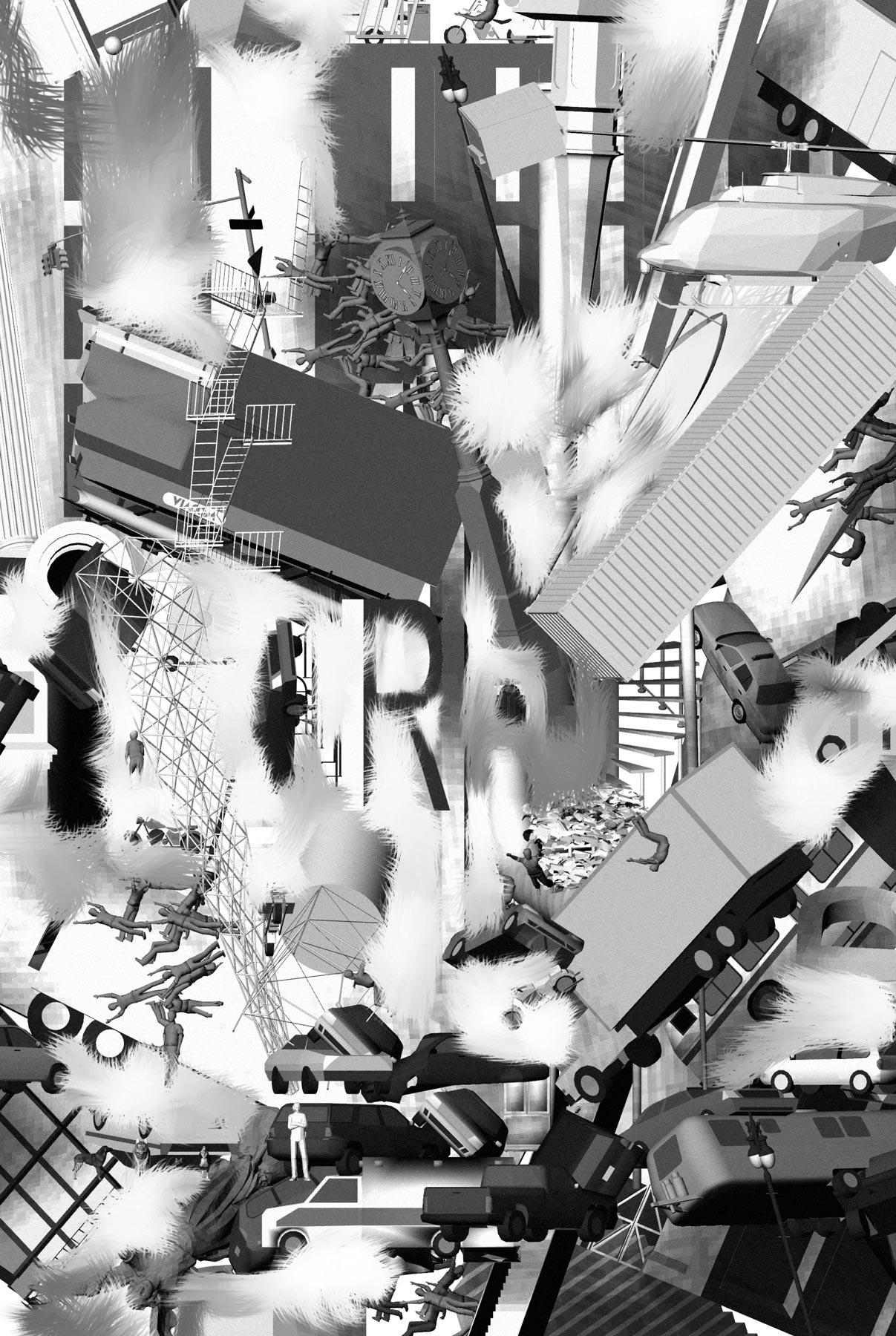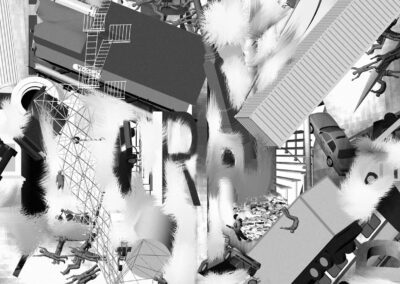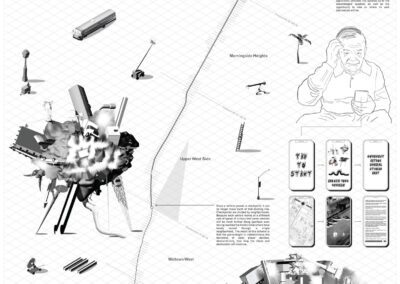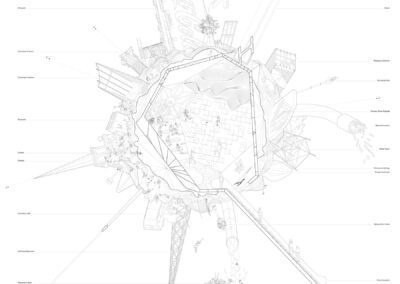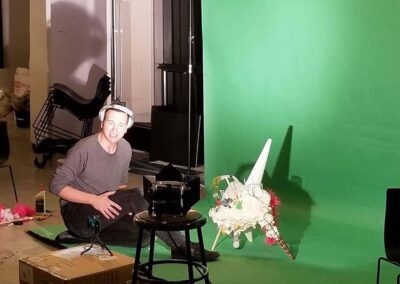This project performs an investigation of privately-owned public space in Manhattan, or “p.o.p.s.”. P.O.P.S. are typically the result of a deal struck between a city government and a property developer where, in exchange for granting valuable zoning concessions, developers provide public space for the city’s inhabitants. I argue that, like the percent for art program, P.O.P.S. Have become largely tokenized, understood more as obligation than opportunity.
Seeking a more politically activated alternative, I turned to Mikhail Bakhtin’s writing on carnival — a type of alternative public space inseparable from event. For Bakhtin, carnival “turned the world upside down” through raucous celebrations made up of excessive alcohol consumption, public sex, food fights, mockery of authorities and the occupation of the grotesque body. Put in simpler terms, everything you’re not supposed to be doing, you do. Carnival was a public celebration just before lent meant to subvert social and cultural norms by literally enacting their opposite.
Concurrent with the advent of carnival were a radical, if not widely known type of theater called pageant wagons. Essentially church sponsored mobile missionary vehicles, pageant wagons were movable theaters hosting miracle plays. I argue that as a kind of proto-p.o.p, pageant wagons were institutionally funded systems which created public space drastically different than our own — though in this case, instead of valuable zoning concessions, the church’s incentive was of course a bit loftier. Dispersed across the city, each pageant wagon contained an individual act of the same miracle play, so it’s conceivable that one might experience the play out of order. Theater attendance during this time looked much different than it does today — then, the audience wasn’t passive or sedentary but often riotous, and the play’s content often incited banter, booing, jeering, fighting, etc. (this was actually expected behavior). It is within this unlikely medieval backdrop of carnival and pageant wagons that my project is staged.
This carnival is composed of a dysfunctional family of vehicles, committing acts of urban affection, disruption, obstruction, occupation, accumulation, inspection, and obliteration. Vehicles obstruct views, halt traffic, fornicate with, collect, surveil and destroy buildings. Each vehicle’s production of chaos is unique.
The carnival is conceived of as a simple game. All vehicles begin at the northernmost part of Manhattan along Broadway — the longest continuous street in New York. The objective of the game is simple — all vehicles advance south from Inwood Hill to Battery Park. Checkpoints are defined by neighborhood boundaries, and once a vehicle passes a checkpoint, that vehicle cannot return north of that boundary. Players remotely access the vehicles with their chosen devices, voting to determine their movement type and location, to decide whether the vehicles should digest or dump fragments they’ve collected, which smells to emit and noises to blast. Depending on the temperament of those playing, vehicles behave either benevolently or violently. Vehicle behavior is determined by consensus, decided upon democratically and remotely using an online application. The application provides live updates as to the vehicles’ locations, various actions to vote on, and a space to chat with other users. Input actions are committed by each vehicle in the order they are received, producing an erratic and unpredictable outcome for the behavior and location of the vehicles, and ultimately, for the fate of the city. The game concludes when all vehicles reach Battery Park. The length of each game is determined by the collective will of those who participate.
While multiple vehicles participate in the game, one has been developed in greater detail. Beginning as a tumbling, skeletal frame, this vehicle stumbles southward collecting fragments and citizens of the city along the way — eventually culminating in a kind of Katamari-like ball whose form acts as an index of its destruction. Those objects deemed inadequate are digested through a chemico-mechanical process which converts matter into a three dimensional adhesive to collect more matter. That which cannot be utilized is excreted onto the street below. The result of this act of destructive accumulation is the construction of a new, fractured microcosm – a messy, miniature world whose ethical alignment is ambiguous, ultimately determined by the players’ collective will.
Ultimately, this project is a fiction which interrogates the relationship between destructive acts and the degree to which anonymous consensus exacerbates or prevents destruction. Through the creation of a family of dysfunctional machines along broadway who are virtually controlled in a game-like format, a temporally indeterminate series of public spaces emerge, those welcoming benevolence or transgression, depending on the collective will of those who participate.

